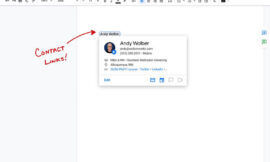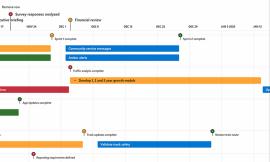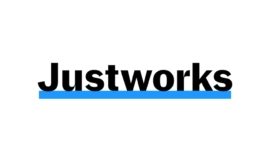Business intelligence tools are vital to organizations seeking information to make sound decisions. This comparison of BI platforms Zoho Analytics and Qlik Sense will help you determine if either is the best choice for you.

Companies are realizing the power and value of business intelligence, which allows them to respond quickly to customer preferences and market changes. Among the most widely used and trusted BI and analytics platforms are Zoho Analytics and Qlik Sense. In this article, we discuss and compare Zoho Analytics and Qlik Sense software.
What is Zoho Analytics?
Zoho Analytics is a self-service BI and analytics software for creating dashboards and analyzing data. It is available both on the cloud and on-premises and helps provide valuable insights from business data of small to large organizations. Zoho Analytics allows visual analysis of business data and can be used across several functional fields by a wide range of users.
The Zoho Analytics platform provides a complete picture of the team’s progress with informative dashboards. Users can also create a slew of reports, such as hours used, resource utilization charts, project status and planned vs. actual data.
SEE: Hiring kit: Data architect (TechRepublic Premium)
The latest release, Zoho Analytics 5.0, has a rich feature set, including unified business insights, Zoho DataPrep, data storytelling, deep augmented capabilities like Zia insights and Conversational BI and 60+ updates. It also offers access controls/permissions, activity dashboard, ad hoc query and reporting, application development, collaboration tools, customizable dashboards and reports, and data connectors, along with many other features.
What is Qlik Sense?
Qlik Sense is a world-class BI software that enables users of all skill levels to create and share powerful, interactive dashboards in a governable environment. The solution uses AI, combined with a powerful analytics engine, to help businesses make data-driven, actionable decisions.
Qlik Sense uses associative technology to allow fast calculations, at scale and in context. It delivers many essential services on even the most complex use cases within a single cloud platform, including self-service visualization, interactive dashboards, alerting & action, reporting, mobility, custom & embedded and advanced analytics. Its feature set offers access controls/permissions, activity dashboard, ad hoc query and reporting, API, benchmarking, collaboration tools, contextual search, customizable dashboards, reports, and templates, and data connectors, among other features.
Zoho Analytics vs. Qlik Sense features comparison
BI solutions are a vital tool in achieving the operational efficiency and agility that organizations require. Although Zoho Analytics and Qlik Sense both are trusted BI solutions, there are some differences in their services and performance.
Prebuilt analytics
BI solutions commonly allow companies to configure their system and create reports. A BI solution with a preconfigured system and data warehouse should include prebuilt KPIs, reports and metrics. Zoho Analytics is good enough on prebuilt business analytics; however, the prebuilt business analytics of Qlik Sense is limited and available only for the Enterprise edition.
Ability to connect data sources
BI solutions should be able to combine data from companies’ ERP, CRM and financial systems, as well as from external sources, like third-party applications. Zoho Analytics provides a better way to get data from third-party business apps. While Qlik Sense is limited to getting data from third-party business apps (and only for the Enterprise edition), it could be connected to any data source.
Historical data storage and trend analysis
BI solutions should be able to combine data from companies’ ERP, CRM and financial systems, as well as external sources like third-party applications. Zoho Analytics provides a better way to get data from third-party business apps. On other hand, Qlik Sense is limited to getting data from third-party business apps and is available only for the Enterprise edition but virtually could be connected to any data source.
SEE: Tableau business analytics platform: A cheat sheet (free PDF download) (TechRepublic)
The differences between Zoho Analytics and Qlik Sense are summarized below.
| Zoho Analytics | Qlik Sense | |
|---|---|---|
| Automatic data blending | Supported | Not supported |
| Benchmarking | Not supported | Supported |
| AI-powered automation, contextual insights and narration | Supported | Not supported |
| Strategic planning | Not supported | Supported |
| Embedding/publishing reports and dashboards | Supported | Not supported |
| Integration | Limited | Virtually any data source |
| Prebuilt business analytics | Supported | Very limited — available in Enterprise edition |
| Scorecards | Not supported | Supported |
| Automatic data sync | Supported | Not supported |
| Data preparation module to model, cleanse, prepare and organize data | Supported | Not supported |
| Analytics portals for distribution & consumption | Supported | Not supported |
| Smart alerts | Supported | Limited — available in Enterprise edition only |
| Trend / Problem Indicators | Not supported | Supported |
| Historical snapshotting | Supported | Not supported |
| Supported operating systems | Windows PC, Android, OS iPhone/iPad/Mac, Linux | Windows PC, Android, OS iPhone/iPad/Mac |
| Chat and In-person training | Not supported | Supported |
| Pricing model | Free, monthly payment, annual subscription | Quote-based |
For more comparisons of BI solutions, check out these TechRepublic articles: Power BI vs. Tableau, Power BI vs. Zoho Analytics, SAP BusinessObjects vs. Oracle BI, Tableau vs. Databox: BI tool comparison, Domo BI vs. Dundas BI: Software comparison and top Power BI alternatives.
The author of this article is Al Mahmud Al Mamun.
Source of Article



